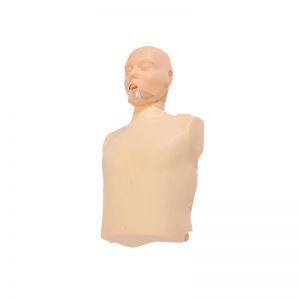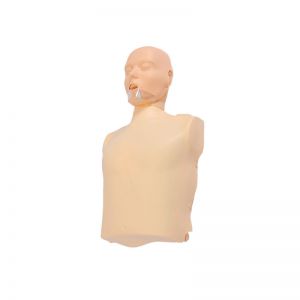ADA MED SUPPLY LIMITED
Phone:+86 19937901373
Tel:+86-0379-65160607
Email:adaanatomy@adaanatomy.com

Article tag: Simple Half-body CPR simulator CPR model BIX/CPR100A

In first aid training, cardiopulmonary resuscitation (CPR) is one of the most basic and important skills. For medical students and first aid training students, mastering cardiopulmonary resuscitation technology is the key to improve the survival rate. However, how to effectively teach this skill in a short period of time and ensure that students can master standard operations is a big challenge in training. As a simplified version of the training tool, the simple half-body cardiopulmonary resuscitation simulator has become an ideal choice for beginners and first aid training courses with its unique advantages.
Personal growth of medical students

Simple Half-body CPR simulator
For medical students, the Simple Half-body Cardiopulmonary resuscitation simulator provides a convenient training platform without complex equipment. Compared to full-body simulations, half-body models are not only less costly, but also easier to carry and operate. By using this simulator, students are able to familiarize themselves with the core techniques of cardiopulmonary resuscitation, such as chest compressions and rescue breathing, in a relatively short time. More importantly, it helps students develop confidence in first aid procedures and operate more calmly and accurately in the face of actual first aid. Therefore, this simple simulation has a positive role in promoting students' personal growth and early career.
The advancement of professional skills
The simple half-body cardiopulmonary resuscitation simulator can simulate the real chest structure to help students get familiar with the basic movements and forces during cardiopulmonary resuscitation. In the design of the model, it can accurately feedback the depth and frequency of the press to ensure that the trainees can master the operation requirements in line with the standard. Through repeated practice, students can strengthen their memory, improve their proficiency in operation, and thus improve their skills in first aid. For the first aid training students, the simple simulation can effectively help them quickly master the basic cardiopulmonary resuscitation skills, and lay the foundation for further advanced training.
Data support
Research data show that the use of simple half-body cardiopulmonary resuscitation (CPR) simulators significantly improves the effectiveness of first aid training. One study showed that participants who underwent simple simulator training were about 20 percent more successful in actual CPR operations than those who did not receive the training. In addition, simulation training helps participants better master the correct frequency of chest compressions (100-120 times/minute) and depth of compressions (at least 5 cm), thus increasing the odds of successful resuscitation.
Sum up
The simple half-body cardiopulmonary resuscitation simulator has become an indispensable tool in first aid training due to its simplicity, cost effectiveness and efficiency. For medical students, it can not only help them quickly master basic first aid skills, but also lay a solid foundation in clinical practice. Through the data supported research results, the simple hemitorso has shown significant effects in improving the success rate of first aid and reducing operational errors. Whether beginners or first-aid training students, training with this simulator can effectively improve their professional competence and emergency response ability, ensuring that timely and correct decisions are made in real first aid scenarios.